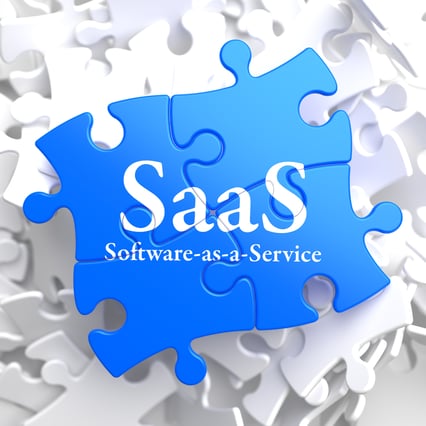
Language translation within a product impacts more than the words on the screen. When not tested thoroughly, localization can alter the compatibility with regional operating systems, interrupt a product’s functionality and scramble the layout of the entire user interface.
Meet localization software testing, the preventative solution that allows QA teams to examine if an application is ready for target regions. And while content and UI are most impacted when language transition occurs, all product factors must be examined so that your software has the strongest chance for success at market.
This complete guide reviews everything you need to know about localization testing, including:
- how to perform localization testing
- recommended localization testing tools
- benefits of localization testing
- ways to automate the localization testing process
Localization Testing Areas of Focus
Localization testing is not one type of test. Rather, it’s a collection of tests designed to verify the readiness of your product across target regions and languages.
So, what are the best ways to perform localization testing? Focus on testing the product’s content, UI, functionality and setup / upgrade performance.
-
Content
Confirm that your translation from one language to another is accurate during your localization testing process. QA testers review the translation of every screen in runtime context to verify that there are no issues within the content.
During software localization testing, ask yourself these questions:
- Is all terminology consistent across documentation and the UI?
- Is all content free of typographical and grammatical errors?
- Is all content translated correctly?
- Is all content free of character corruption?
-
User Interface (UI)
Make sure to identify and fix any issues with the layout and design of your product’s UI during localization software testing. QA engineers should plan on creating test cases that guarantee regional users enjoy an optimal user experience with your application.
A strong localization testing plan should answer these questions:
- Is your product layout consistent with the original version?
- Are localized images rendering correctly with great quality?
- Does the text appear as expected without inflation issues?
- Does the text appear in the right place within the UI?
- Are hyphens and line breaks accurate?
-
Functionality
Ensure that the destination system adapts well within the source interface through software functional testing. QA teams rely on the assistance of localization testing tools to validate that the product functions as expected, no matter its language.
When localization testing software, make sure your test cases answer these questions:
- Do all hyperlinks function correctly?
- Are all hot keys functional?
- Are special characters supported throughout the application?
- Are required fonts supported in the target region?
- Do format separators function appropriately?
- Does the system remain stable when localized?
- Is the product still compatible with supported operating systems, peripheral systems and international support systems when localized?
-
Setup and Upgrade
It’s essential that your localization testing confirms that your product can be easily accessed and updated across target regions. Your QA testers should confirm that your application can be downloaded, uninstalled and upgraded within a localized environment.
While performing software localization testing, make sure your QA team answers these questions:
- Can the product be set up successfully across devices when localized?
- Can the product be uninstalled successfully across devices when localized?
- Can the product be upgraded successfully across devices when localized?
- Do older versions of the product still operate as expected when localized?
Localization Testing Tools
It’s important to utilize localization testing tools when looking to maximize test coverage.
From screenshot capturing and test automation to test case management and issue reporting, the right tools can keep your testing cycle on track for localization software testing. We recommend exploring these options for your localization testing process.
-
Redmine
Streamline your software localization testing lifecycle with this workflow management tool. Redmine accelerates the issue tracking process through its variety of features, including repository view, time tracking ticket and integrated wiki for sharing testing instructions.
-
ShareX
This tool comes in handy whenever your QA testers need to take screenshots for issue reporting during localization testing in software testing. ShareX allows users to upload text contents to Pastebin directly as well as upload files to popular services including Google Drive, Dropbox and Amazon S3.
-
TestArchitect
This tool amplifies your localization test coverage by applying keyword-driven testing to the automation process. TestArchitect can be used in conjunction with Selenium and can be automated across platforms including web, desktop, mobile and database.
-
TestRail
This tool is the most compatible both with your current toolset and for managing localization test cases. TestRail provides insightful metrics on your testing process, easily tracks test case results and integrates seamlessly with most issue tracker systems.
Automating Localization Testing
The truth is, most localization testing needs to be performed manually. Exploration of the visual user experience when your product is localized requires human review who can validate if all words appear correctly and all design layouts render as expected. There are also so many nuances across languages that localization testing tools aren’t equipped yet to handle.
That doesn’t mean there aren’t opportunities for automating your localization testing process. Consider automating these types of test cases to streamline your localization testing process.
- Special characters: In certain languages, two words (such as a last name) can sound phonetically the same but are spelled differently because of characters special to that region. Test automation can confirm that your product recognizes these differences and doesn’t create multiple records for the same person.
- Additional fields: Many languages require additional information, such as multiple middle names. These fields need to be added without drastically altering the UI from its original design. Test automation can confirm that these additional fields are available, that the data collected for records is accurate and that the UI maintains its intended layout.
- Locating UI elements: While most UI test cases require manual review, test automation can cover pre-checks of your user interface. Automated testing can confirm that your design elements appear in the right place after localization and that all elements stay intact after language translation.
Benefits of Localization Testing
With how much ground this type of testing can cover, it’s no wonder why so many successful companies include localization testing within their QA practices. Here are the advantages you can expect when implementing localization software testing within your testing process:
- Reduce the overall testing cost: Proper localization test case execution creates more efficient testing processes, which lower the cost of testing over time.
- Reduce support costs: Software localization testing minimizes the number issues your regional customers experience with your product, thus lowering the cost to resolve defects that were deployed into production.
- Scalability: Testing for localization can reflect realistic scenarios in terms of visits from an expected number of users, ensuring that your product can handle performance load in the market.
- Provide regional language support: Gain popularity in target locales with localization software testing that enforces all regional requirements within the product experience.
Can your QA team benefit from more guidance on localization testing? Partner with a QA services provider like QASource. Our team of testing experts are skilled in all approaches of localization testing, including manual testing and automation testing. Team up with our QA engineers to maximize your test coverage and implement a strong localization test process across development cycles. Get in touch with a QASource expert today.





